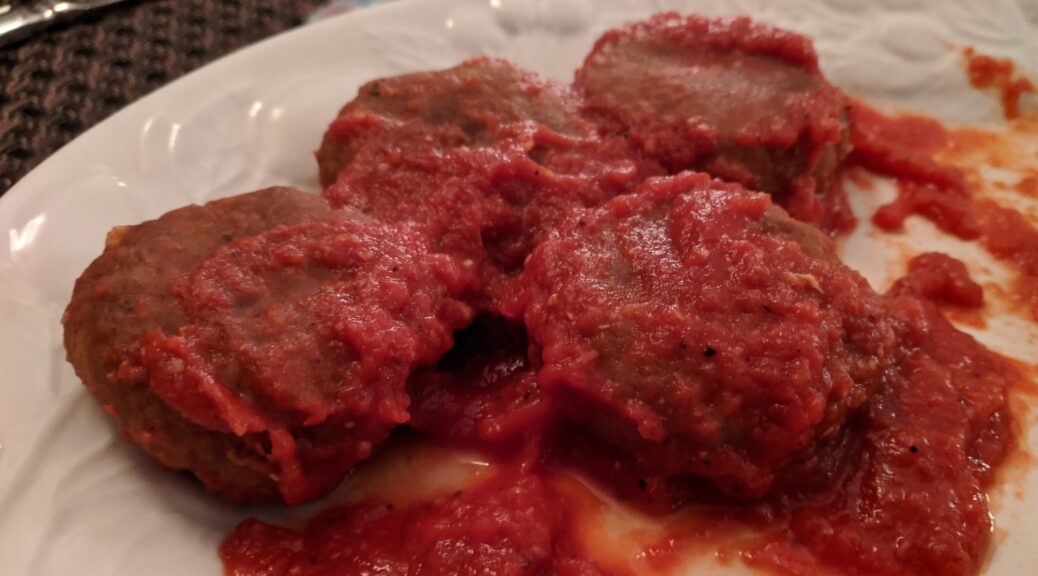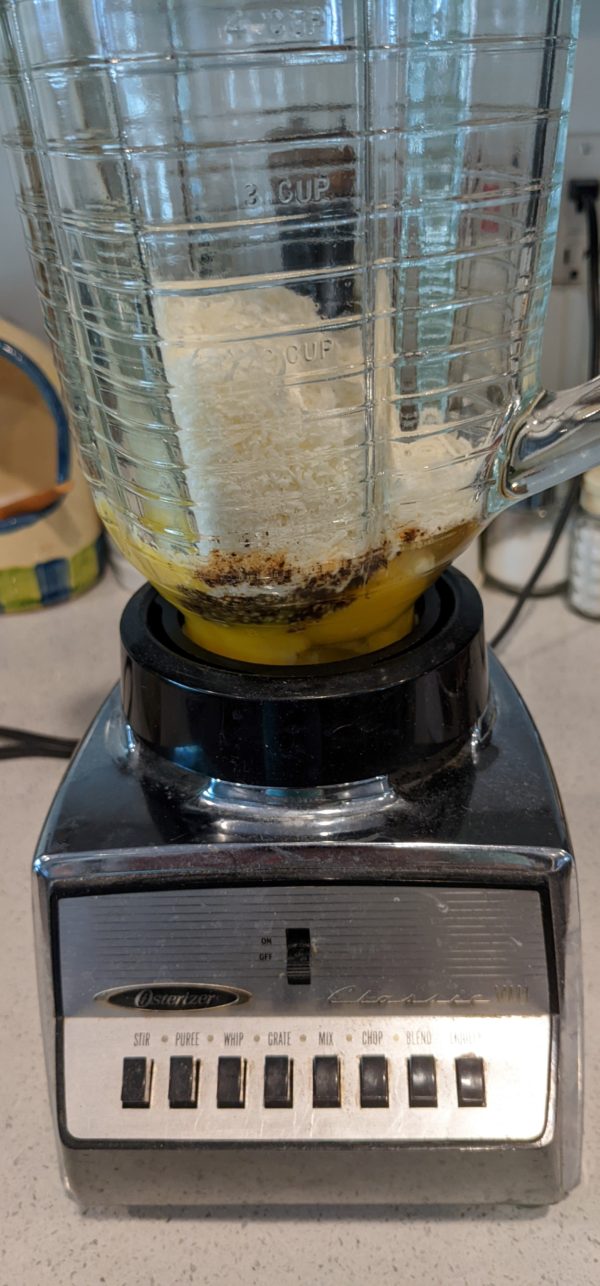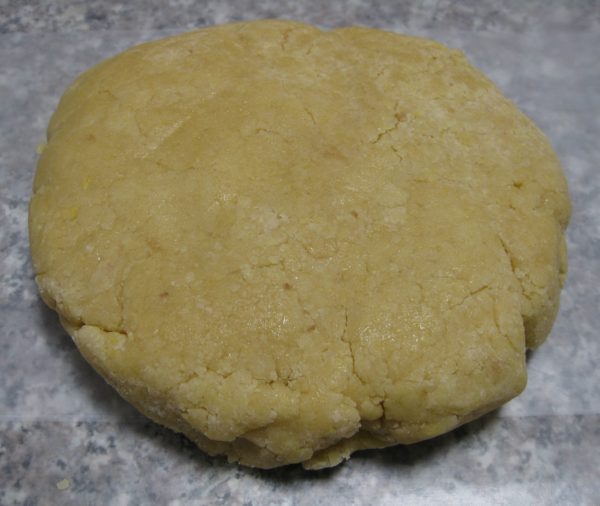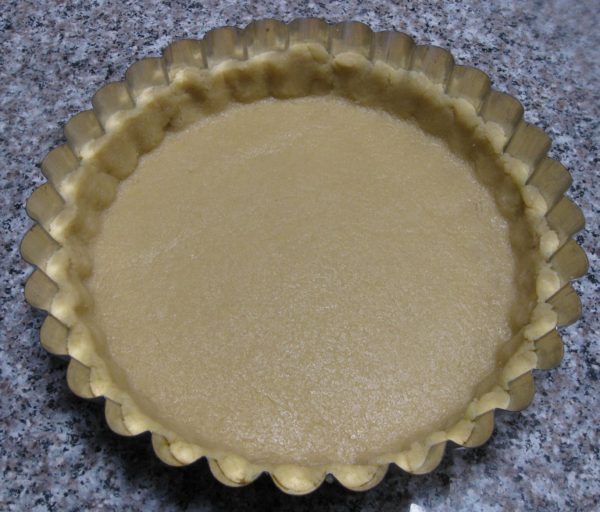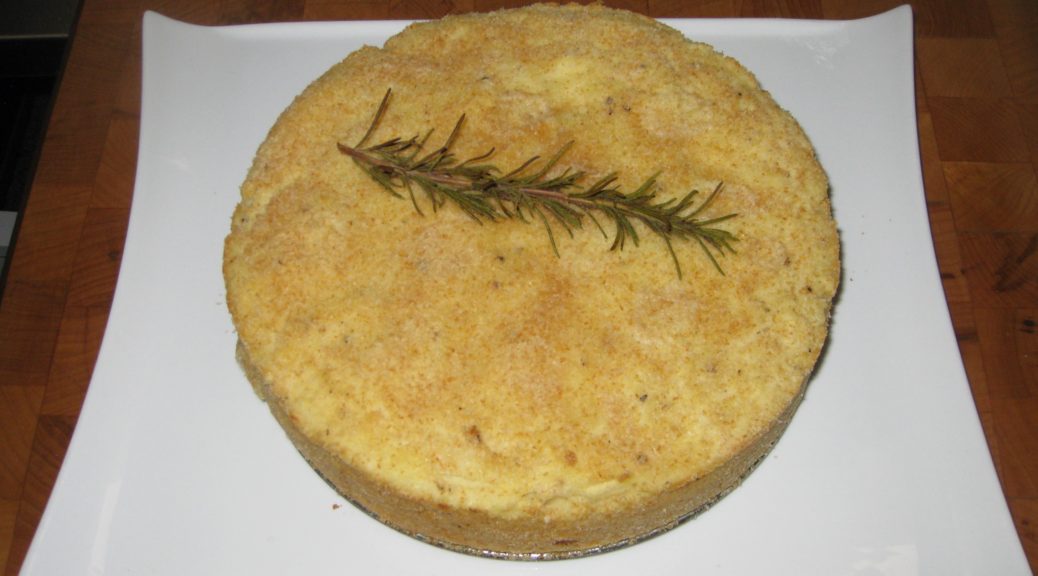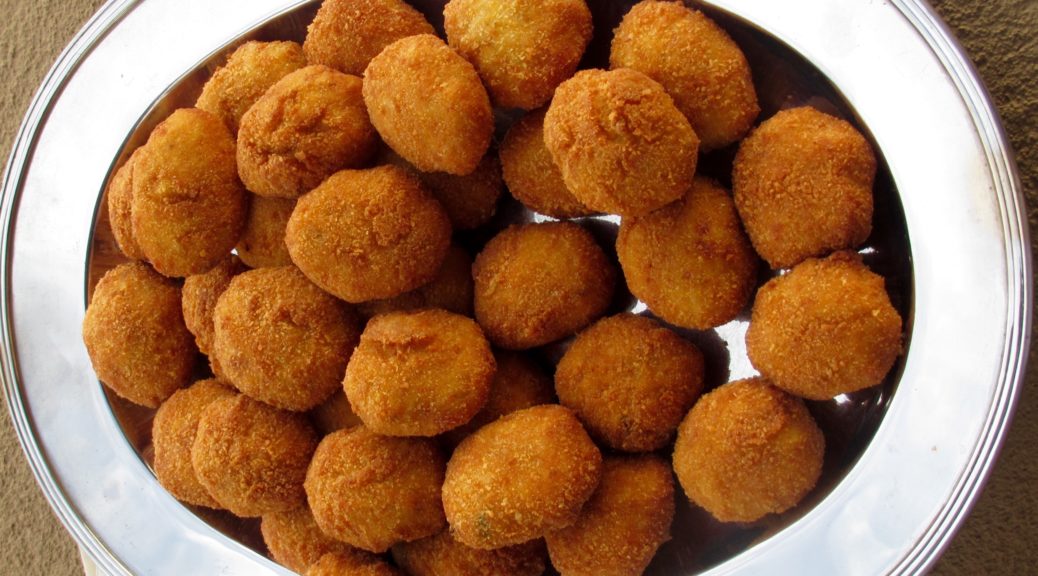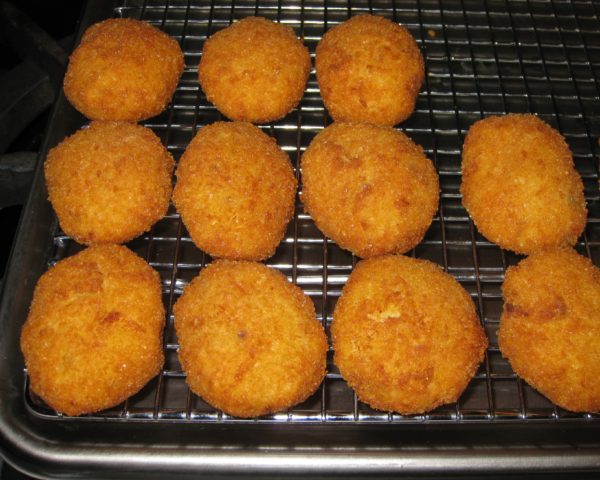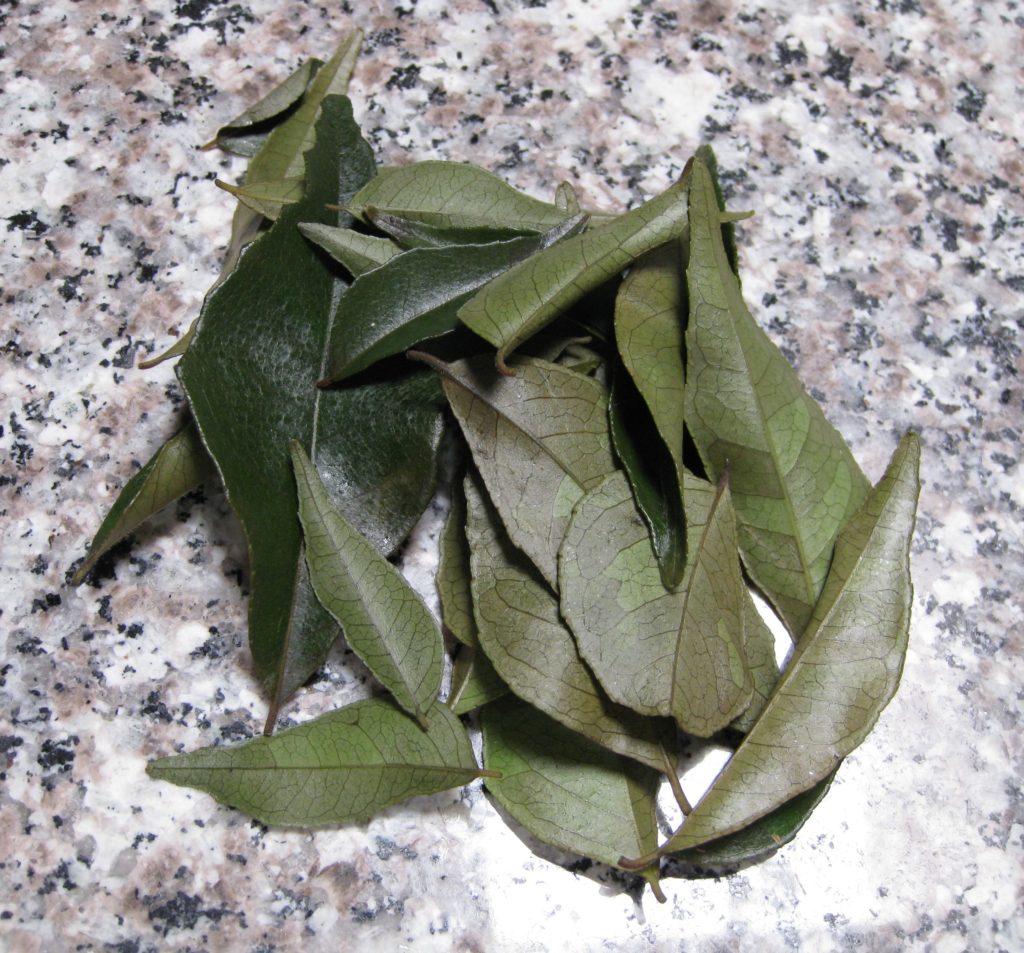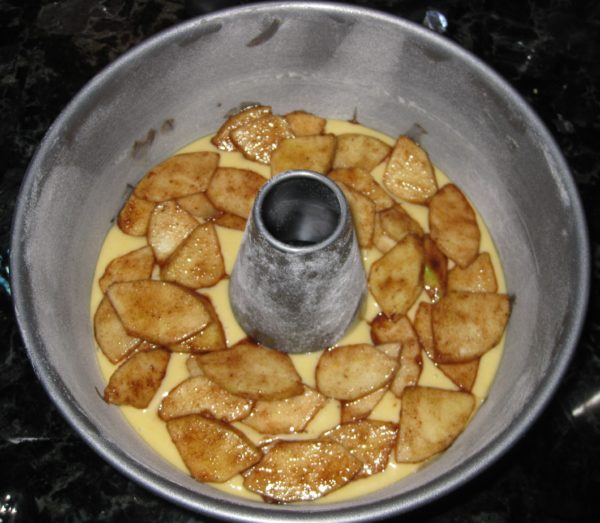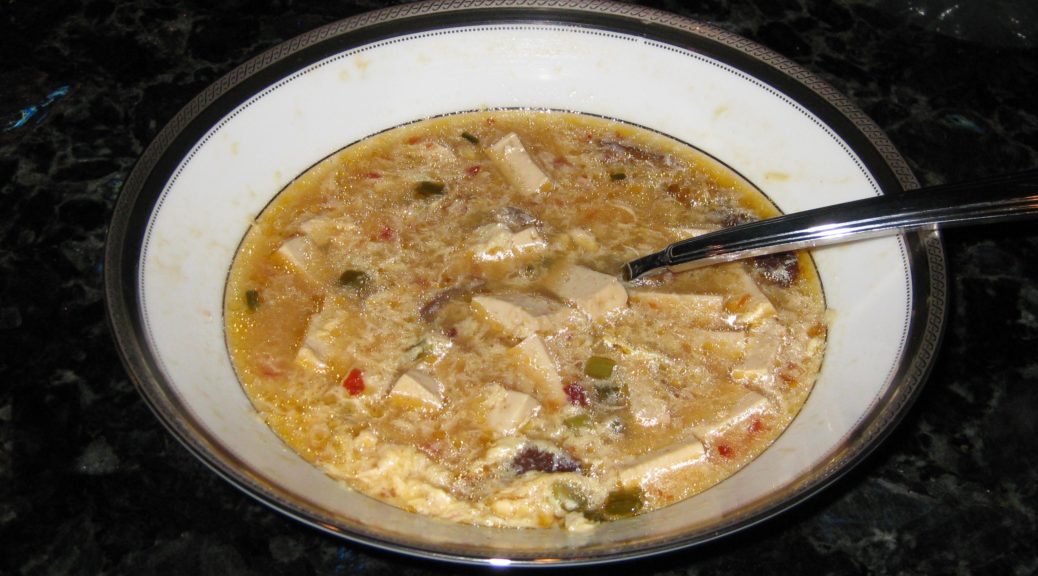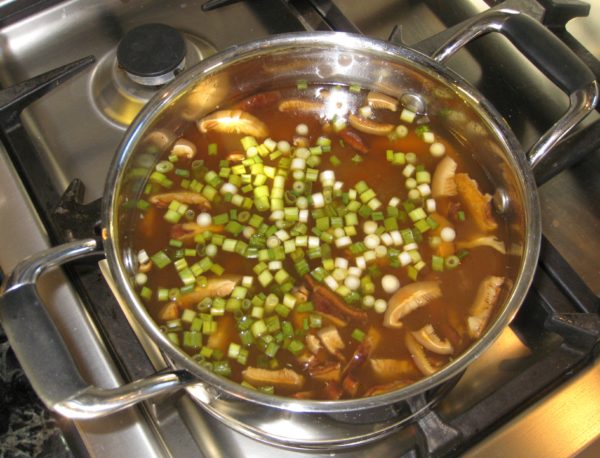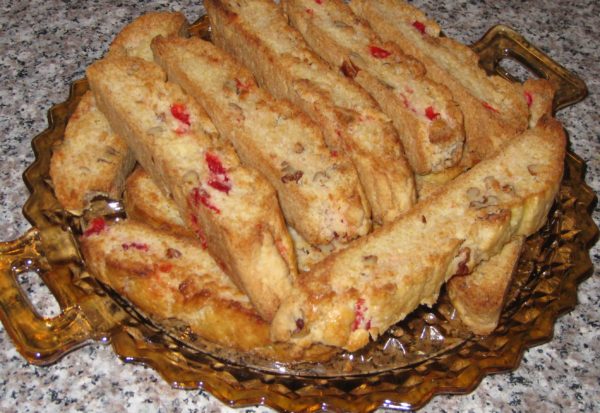6 March 2024
Polpette!
The usual translation of the Italian word polpette is “meatballs.”
But polpette are so much more. Italians use the word polpette to refer to any “balls” made of chopped or ground up stuff including meat, fish, vegetables… you name it!
That leaves the translation a bit up in the air. If the “balls” are made of meat I usually translate polpette as meatballs but if they’re made of other ingredients, as in this recipe, I usually translate it as croquettes. Tuna meatballs just doesn’t sound right! And eggplant meatballs is even worse!
Join our mailing list and you’ll never miss a recipe again!
By the way, the singular of polpette is polpetta but who ever had just ONE meatball… or croquette!
I have other polpetta recipes coming in future blog posts but in the meantime, if you’re up for more meatball recipes, take a look at these two:
The meatball mixture in the Wedding Soup makes scrumptious meatballs that can be fried and then simmered in tomato sauce rather than put into soup!
Once again, I find myself apologizing for a prolonged absence from my blog. I have been working diligently on my latest cookbook, due out this spring, called
Dispatches from Calabria: Eating My Way Through Culinary School in Italy.
In the meantime, if you haven’t seen my first book,
Mastering Artisan Italian Gelato: Recipes and Techniques,
you can read about it HERE.
In the typical progression of an Italian meal, these croquettes would be served as a “secondo,” what we Americans might call the main course except that in a full-on Italian meal the secondo would be preceded with a “primo,” which is usually pasta, soup or a rice dish. A secondo is usually accompanied by one or more side dishes, “contorni.”
You might consider starting a meal with:
Pear, Celery and Arugula Salad with Lemon Dressing
For a pasta course, any of these would go well:
Pasta with Silky Zucchini Sauce
Angel Hair Pasta with Crispy Breadcrumbs
Along with the croquettes, you could select from the following side dishes:
Green Beans with Parmesan Cheese
Rapini with Olive Oil, Garlic, and Red Pepper
Happy eating!
Follow us on social media

| Prep Time | 20 minutes |
| Cook Time | 25 minutes |
| Passive Time | 1 hour |
| Servings |
people
|
- 2 x 7 ounce cans tuna packed in oil preferably Italian
- 2 1/4 ounces crustless white bread
- 1/2 ounce Grated Parmigiano Reggiano cheese
- 1 tablespoon minced fresh parsley
- 2 eggs lightly beaten
- salt to taste
- black pepper freshly ground to taste
- vegetable oil for deep frying as needed
- meatless tomato sauce
Ingredients
|

|
- Drain the tuna and squeeze out excess oil.
- Soak the bread in water. Squeeze out excess water.
- Combine all ingredients and mix with your fingers until you get a uniform mixture.

- Form into 14 portions.

- Roll into balls then flatten slightly.

- Dredge in flour then refrigerate one hour, if possible.

- Deep fry the croquettes then simmer in tomato sauce for about 10 minutes.
You can find the recipe for Basic Tomato Sauce HERE.
Copyright © 2024 by Gary J Mihalik. All rights reserved.

